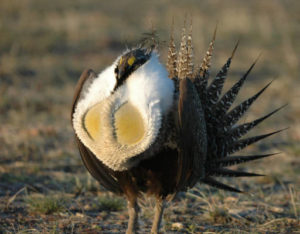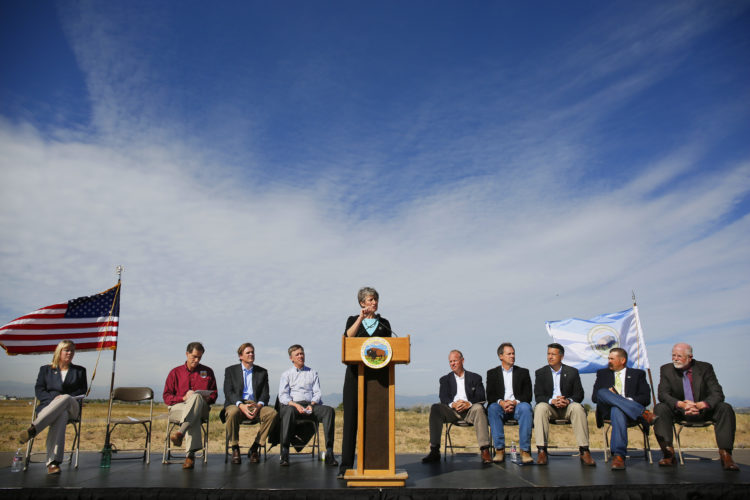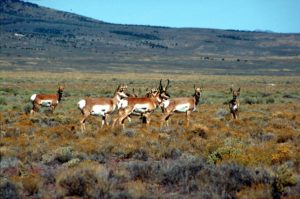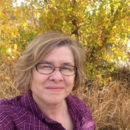We have much more to do and your continued support is needed now more than ever.
‘Pedal to the metal’ to save the Greater Sage-Grouse

On Sept. 22, 2015, with the Front Range of the Rockies as a backdrop, Secretary Jewell announced the greater sage-grouse didn’t have to be placed on the endangered species list, thanks to the work of private landowners, local communities, conservation organizations and public agencies. Another big helping factor was the strategy developed by the Bureau of Land Management and U.S. Forest Service to rebuild the population of the quirky, chicken-sized bird and to conserve and restore its habitat – the sagebrush steppe.
Secretary Jewell returned to the wildlife refuge just north of Denver this week to meet with a diverse group of people who’ve been working across the West to save sage-grouse. At the start of a roundtable discussion, she reminded them that a year ago, she said the decision not to list the bird was just a beginning. Secretary Jewell is not letting up on the endeavor.
“Now we’re in the thick of the work… [and] I’m going to keep the pedal to the metal as long as I’m on the job.” – Interior Secretary Sally Jewell

Unprecedented Conservation Effort
The campaign to save greater sage-grouse has been called the largest-ever conservation effort in U.S. history. The plans, written with input from state and local governments, cover 173 million acres across 10 Western states. The goals are to rebuild sage-grouse populations and to conserve sagebrush lands, which provide food and shelter to more than 350 other species, including mule deer, elk, pronghorn and golden eagles.
This bird with the fancy, spiky tail feathers and entertaining and elaborate mating dance once numbered as high as 16 million. Its numbers have since dropped to an estimated 200,000 to 500,000. Sage-grouse habitat has been reduced and degraded by conversion of rangeland to agriculture, drought, wildfires, invasive grasses choking out native vegetation, energy development, subdivision of land and overgrazing.

Secretary Jewell and the couple dozen or so around the table noted some of the conservation successes so far: some population increases; more than 1,300 ranchers working with the U.S. Department’s Natural Resource Conservation Service to conserve habitat on more than 5 million acres of privately owned land; greater coordination between state and local agencies. The NRCS has spent an average of $45 million annually on sage-grouse conservation since 2010 and has committed an additional $211 million through 2018.
However, there are big challenges. Lawsuits have been filed by those who think the plans are too heavy-handed and will interfere with the use of public lands: the states of Idaho and Utah, some Western counties, oil, gas and mining trade groups. Other lawsuits have been filed by conservation organizations that think the plans don’t do enough to protect sage-grouse. Holding off invasive species that wipe out native vegetation, making the range more susceptible to damaging wildfires, is a tall order.
Another big challenge for the bird, and those who want to save it, is Congress, specifically the members who want to derail the federal conservation plans. A provision in the House version of the National Defense Authorization Act would give control of managing sage-grouse on public lands to states with their own conservation plans, even if those plans didn’t meet the science-based safeguards adopted by the BLM and Forest Service.
Challenges Ahead
Disagreement about including sage-grouse in a bill that deals with military readiness and national security has stalled action by a House-Senate conference committee. Members are expected to hash it out during the lame-duck session.
During the sage-grouse discussion, speakers marveled at the diversity of people around the table and their ability to work together despite their differences and, at times, disagreements.
“I hope this type of collaboration becomes the pattern and not the exception,” said Kate Zimmerman, the National Wildlife Federation’s public lands policy director. “Our objective is not to get animals on a list, but to get them on a healthy landscape.”






















